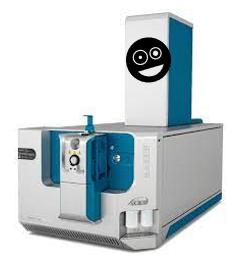Do you have one of these screaming fast self calibrating EIEIO thingies around and are having trouble processing the data?
I think I have it sorted out so that the data from Proteome Discoverer, MetaMorpheus and FragPipe closely match what we're getting from the OneOmics Cloud for each file. Of course, this just makes an MGF so you lose the MS1 level data, but if you are doing spectral count things or TMT/iTRAQ then you don't care about that.
Here are the tricks for working with these data. I like the .wiff2 files because they put the charge state in the header where I expect it to be (every run outputs both wiff (to not break everything for historic software, I think) and .wiff2.).
1. You want to convert in the same output folder where your .wiffscan data is (the .timescan files might also be important, I dunno). If you transfer files, transfer everything. Don't just move the .wiff2, it won't do anything.
3. I'm using the MSConvert PeakPicking with a really tight tolerance. I don't think this is necessary for everyone, but I was trying to see if I tuned out the TOF whether I could resolve the TMTn/TMTc ions. Your files will be smaller, I think, if you raise this a little, but this works great for my stuff.
7. Referencing #1 above. When I submit data to MASSIVE I think I'm going to zip my .wiff2, .wiffSCAN and .timescan for each run together and upload those like that to keep them organized.
To load this into MSConvert, go to your File search menu in Windows and find the seemingly random place the MSConvert ended up and place this .cmdline file in the same place as the other ones, then open or close/reopen MSConvert. You'll now have a default pulldown for 7600 file conversion.
As always, zero guarantees that this will work.


No comments:
Post a Comment